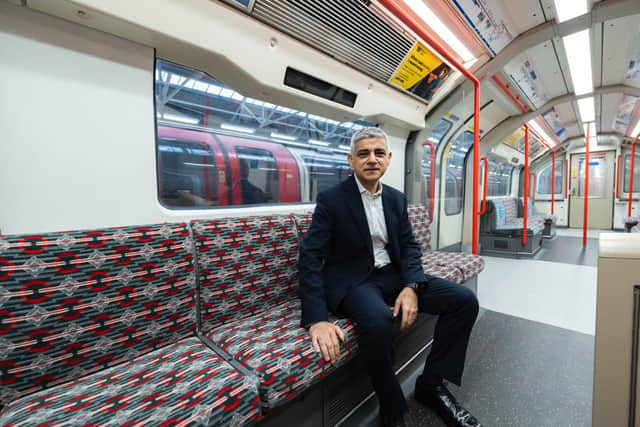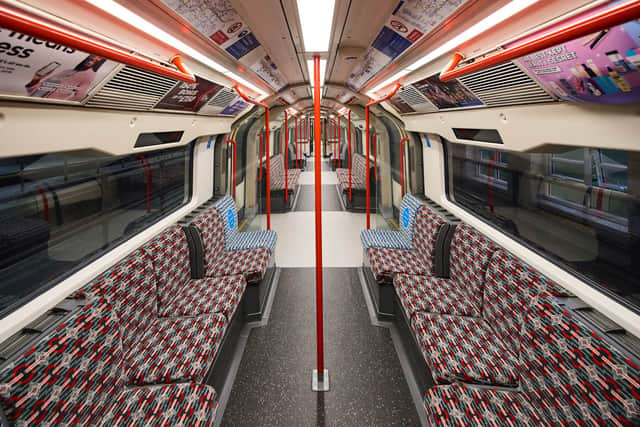Central line: Sadiq Khan visits first new refurbished train as part of £500m project
and live on Freeview channel 276
The Central line is undergoing a £500m transformation with newly refurbished trains featuring CCTV cameras and new moquette seating.
All 85 trains on the line – the longest on the London Underground at 46 miles, will be overhauled and feature more reliable motors and better accessibility, Transport for London (TfL) said.
Advertisement
Hide AdAdvertisement
Hide AdEach carriage will be fitted with CCTV cameras, the first time CCTV has been installed on trains on the Central line.
The mayor of London, Sadiq Khan visited the first newly refurbished train at Hainault depot on Friday as it finishes live testing on the railway.


“The safety of Londoners is my top priority and I want everyone to feel safe, and be safe, when travelling around London at all times,” said mayor Khan.
“These newly refurbished Central line trains will improve the experience of commuters and will now have CCTV, meaning customers can travel more comfortably and safely on the line, complementing the 77,000 CCTV cameras already in place across London’s transport network and TfL’s £180m investment in the Metropolitan Police Service and British Transport police presence on its network every year.
Advertisement
Hide AdAdvertisement
Hide Ad“These overhauled trains will improve safety, accessibility and reliability for Londoners – supporting my aim to continue building a safer, greener London for everyone.”
The £500m programme is the biggest such project in Transport for London’s history. It will take until 2029 to complete.


Once testing of the first train has concluded, production will ramp up with the project returning one train to service per month once the work on it has been completed.
The Central Line Improvement Programme (CLIP) will take five trains out of service at a time over the next four years.
Advertisement
Hide AdAdvertisement
Hide AdThe project involves stripping the line trains down to the frame, with about half the parts either replaced or improved.
The wiring within the trains is also totally revamped, with new power sources and control systems alongside the two CCTV cameras that will be in each carriage. New lighting, improved doors and new seats complete the work.
Andy Lord, London’s Transport Commissioner, said: “We are committed to running the best, safest transport network we possibly can. Making journeys on one of the busiest lines on the Tube network more reliable, more accessible and safer is a critical step in achieving this commitment. While we would ideally like to replace the fleet entirely, the work to transform the existing trains on the Central line will mean that customers can expect a better experience and will mean capacity is improved.
“Millions of people from the east and west of London, as well as from Essex, rely on the Central line to reach the centre of the city every day. It is crucial to driving London’s economy in bringing people to areas like the West End, Oxford Street and Stratford.
Advertisement
Hide AdAdvertisement
Hide Ad“The work will install CCTV on trains, making our customers safer, and will also bring significant accessibility improvements. London is for everyone, and the innovative work by our hard-working engineers will mean more people can use this crucial line as safely as possible.”
Comment Guidelines
National World encourages reader discussion on our stories. User feedback, insights and back-and-forth exchanges add a rich layer of context to reporting. Please review our Community Guidelines before commenting.
